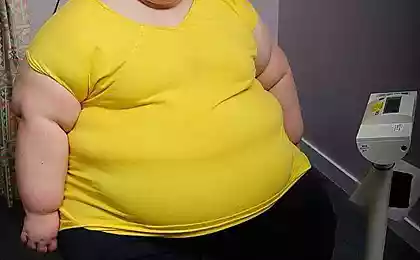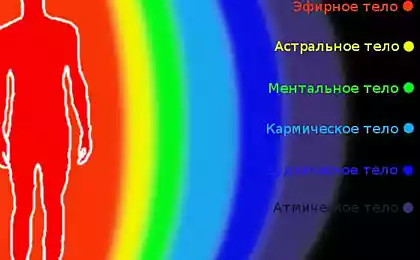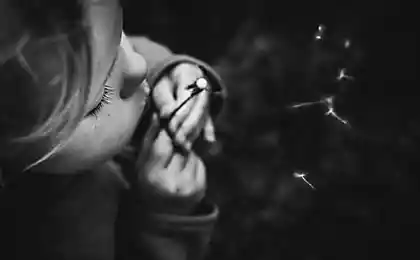568
Deepak Chopra: simple exercises for strength of body, mind and spirit
The American endocrinologist of Indian origin Deepak Chopra notes that in the struggle with bad habits will help: meditation, exercise, Vata-balancing diet and bringing happiness daily activities. At first glance, these concepts vary, but they essentially represent different paths to the same goal of perfect health.
This technique is suitable for the treatment of:

EXERCISES
Many people exercises take the form of competition or extreme physical activities. However, it is clear that in the case when any kind of addiction has broken the equilibrium of the mental and physical system of man, about it not talking.
If drugs, alcohol or unhealthy eating habits have led You to a sedentary lifestyle, You might want to train in such a way as not to expose your body sudden or excessive loads. If you have to work for wear, moderate exercise also will be very useful.
Treat the exercises as an opportunity of understanding. Moving your body, listen to arise in all parts of the sensations and learn to interpret them. What can you learn about yourself as a physical and emotional side? If you are for some time was prone to addiction, you may know that have completely lost form. Perhaps you will also understand that you want too early to stop the exercise or continue it too long. This understanding is no less important than that due to exercise happens to your muscles and tendons. Understanding begins with the renewal of your communication with your physical essence — of communication, which may have long been interrupted due to generated by these or other bad habits Vata imbalance.
GENERAL INSTRUCTIONS
Starting to do a training program, please refer to the following three principles. They will be useful to you and when you gain some experience. These principles are quite different from the competition-oriented work ethic normally associated with training in the West, but they are the basis of Ayurvedic ideas on how to use the body to strengthen the spirit.
Train no more than half its capacity. Most people are worried, not giving yourself adequate load, but excessive load is no better than insufficient. Even if you're some time didn't train came to a physical classroom, you can very accurately assess the margin of safety.
If, for example, swim five laps, you feel that if necessary will be able to swim twenty — do not swim more than ten rounds. Remember that the goal of training is not to bring themselves to exhaustion, but to become more vigorous and hardy. As your physical qualities will improve your level of half of the margin will naturally increase. So following the principle of fifty percent" in no way prevents your output at high levels of efficiency.
Try to exercise daily. If you don't want to train, if you practice three or four days in a row, you feel exhausted, you probably crossed the fifty percent limit. Training program of any duration should be such as to give pleasure and to increase motivation. Replacing the principle of "without suffering there is no progress" to "low voltage, high achievements," you will be able to extract from exercise the benefit of not depleting their energy resources.
Use as an indicator of intensity of training your breath and sweating. If you find that performing exercises, you have to breathe through the mouth, it's another indication that you are overloaded. Convulsive breathing and intense sweating mean that you are putting their body too much stress. The frequency of your breathing — one of the best indicators of the effectiveness of the exercise. If you breathe steadily and deeply, without straining, so you work at the proper level.
EXERCISES
Ayurveda teaches that each person is unique, and the truth of this situation is particularly evident when it came to training. Similarly, how can there not be equally good for all prescription drug, there is a training program that is suitable to everyone. However, there are certain principles of training that can be linked with three main mental-bodily types.
People Kapha type, generally speaking, useful, intense workout with a very serious load. With their bulky and muscular body type, Kapha individuals should not take the concessions and to resist their inherent tendency to a sedentary lifestyle. People of Pitta type, on the contrary, tend to demand from my body too much. If your dominant dosha is Pitta, you should Orient yourself in relaxation exercises, recreational rather than the competitive plan. For people of Vata type is best suited for light workouts — this is especially important given the fact that addictive behavior almost always creates Vata imbalance, regardless of natural dosha-type people.
Among the Vata-balancing types of activities can be called a short Hiking, light aerobics, and Cycling, but it is best in this respect, perhaps, yoga exercises. Despite the fact that many people associate Yoga with acrobatic poses, trances and all sorts of asceticism, it is, generally speaking, misleading. In Sanskrit the word "Yoga" means "Union" and its true aim is to unite the body, mind and spirit.
Yogic exercises are of course useful for the muscles and cardiovascular system, but they also contribute to relieving the concerns and focus of consciousness. These qualities make Yoga particularly effective in calming the Wool.
Since Vata is associated with the elements air and ether, it calming is achieved through exercise, creating a "grounding" effect due to the inclination of the body to its center or head to the ground. These poses should be taken slowly, without strain. As with all yoga exercises, you need to remember that proper breathing is important no less of the poses. Try to breathe through the nose, deeply and rhythmically. Create at home with the help of breath is the feeling of balance, tranquility and inner strength.
VATA-BALANCING POSTURES
Doing these exercises, remember to relax, strike a pose without strain. Don't lay responsibility the impeccable performance of each exercise. Just stretch it out to such an extent to feel a slight tension. Over time your flexibility will increase by itself.
TILT FORWARD (PAMAHALAAN)
Stand relaxed and comfortably resting his hands on his hips. Inhaling, slowly raise your arms up, stretching them in the end over the head. Bend your head back until you feel a light strain and look upward.
Keeping arms straight, not bending their elbows, lean forward, bent at the waist and try to touch the floor in front of him. Stretch it out only to such an extent as not to cause yourself discomfort and not to feel that you have to grit your knees. Count to five, then, deeply inhaling, return to starting position. Repeat the exercise three to five times.
POSE LIGHTNING (VAJRASANA)
Get down on his knees together, shifting the weight on your heels. Position your feet comfortably, feet up. Keep your back straight, lift your head. Hands, relax, put on your knees.
Close your eyes and breathe deeply and evenly. Let your mind be purified. Keep this pose for at least thirty seconds or as much as you find it convenient.
POSE "HEAD TO KNEE" (JANA-SIRSASANA)
Sit on the floor with your legs straight in front of him. Bend your left leg at the knee and propped her foot the entire surface of the right thigh. Exhaling, bend forward and try to reach both hands to the toes of the right foot. Do not overexert, if necessary, slightly bend the right leg at the knee. Avoid clamping the chest and not too vegimite back. Breathing freely, stay in this pose till you count to five. Then return to starting position and take a symmetrical pose. Repeat 3-5 times.
POSTURE AWARENESS (SAVASANA)
Lie on your back, turning the hands outward and looking upward, so as not to see their feet. Close your eyes and try to completely relax all parts of your body. Breathe deeply and rhythmically, and feel your muscle tension. In this position, you can stay as long as you seem comfortable — the longer the better. To truly relax is an art, and as you gain experience you will feel mastered this skill more fully.
BREATHING EXERCISES
Breathing is the process of entry into a close relationship with the Universe. Every time you inhale and exhale you exchange with the environment billions of atoms. Your bodily and mental system takes all necessary and gets rid of all the excess. The following two exercises can help you in removing Vata imbalance. Follow them, feeling worried or upset, and to bring thoughts in order before sleep.
ALTERNATE NOZDREVA BREATH (NADI-SHODHANA)
Seated comfortably on a chair with a straight back, put his feet on the full foot.
Place your thumb of the right hand on the right wing of the nose, middle and ring fingers on the left.
Gently pinch your right nostril with your thumb while slowly exhaling through the left nostril. Now free to breathe in the left nostril.
Hold the left nostril middle and ring fingers and exhale through the right nostril. Then freely inhale right nostril.
Again hold your right nostril with your thumb while slowly exhaling through the left nostril. Now free to breathe in the left nostril.
Hold the left nostril middle and ring fingers and exhale through the right nostril. Then freely inhale right nostril.
Within 4-5 minutes, run three full cycle of exercises for each nostril.
BUMBLEBEE (BHRAMARA)
Sit in a comfortable chair, keeping your back straight and your feet on the full foot.
Take a deep breath and exhaling through the nose, make a low humming deep-throat sound.
Fully exhaling, inhale again and repeat the humming on the exhale.
Within 2-3 minutes, run five cycles of the exercise.published
P. S. And remember, just changing your mind — together we change the world! ©
Join us in Facebook , Vkontakte, Odnoklassniki
Source: healthinfo.ua/problem/seks/methodic/58
This technique is suitable for the treatment of:
- Alcohol dependence
- Tobacco addiction
- Drug dependence
- Dependence on computer games
- Addicted to sex

EXERCISES
Many people exercises take the form of competition or extreme physical activities. However, it is clear that in the case when any kind of addiction has broken the equilibrium of the mental and physical system of man, about it not talking.
If drugs, alcohol or unhealthy eating habits have led You to a sedentary lifestyle, You might want to train in such a way as not to expose your body sudden or excessive loads. If you have to work for wear, moderate exercise also will be very useful.
Treat the exercises as an opportunity of understanding. Moving your body, listen to arise in all parts of the sensations and learn to interpret them. What can you learn about yourself as a physical and emotional side? If you are for some time was prone to addiction, you may know that have completely lost form. Perhaps you will also understand that you want too early to stop the exercise or continue it too long. This understanding is no less important than that due to exercise happens to your muscles and tendons. Understanding begins with the renewal of your communication with your physical essence — of communication, which may have long been interrupted due to generated by these or other bad habits Vata imbalance.
GENERAL INSTRUCTIONS
Starting to do a training program, please refer to the following three principles. They will be useful to you and when you gain some experience. These principles are quite different from the competition-oriented work ethic normally associated with training in the West, but they are the basis of Ayurvedic ideas on how to use the body to strengthen the spirit.
Train no more than half its capacity. Most people are worried, not giving yourself adequate load, but excessive load is no better than insufficient. Even if you're some time didn't train came to a physical classroom, you can very accurately assess the margin of safety.
If, for example, swim five laps, you feel that if necessary will be able to swim twenty — do not swim more than ten rounds. Remember that the goal of training is not to bring themselves to exhaustion, but to become more vigorous and hardy. As your physical qualities will improve your level of half of the margin will naturally increase. So following the principle of fifty percent" in no way prevents your output at high levels of efficiency.
Try to exercise daily. If you don't want to train, if you practice three or four days in a row, you feel exhausted, you probably crossed the fifty percent limit. Training program of any duration should be such as to give pleasure and to increase motivation. Replacing the principle of "without suffering there is no progress" to "low voltage, high achievements," you will be able to extract from exercise the benefit of not depleting their energy resources.
Use as an indicator of intensity of training your breath and sweating. If you find that performing exercises, you have to breathe through the mouth, it's another indication that you are overloaded. Convulsive breathing and intense sweating mean that you are putting their body too much stress. The frequency of your breathing — one of the best indicators of the effectiveness of the exercise. If you breathe steadily and deeply, without straining, so you work at the proper level.
EXERCISES
Ayurveda teaches that each person is unique, and the truth of this situation is particularly evident when it came to training. Similarly, how can there not be equally good for all prescription drug, there is a training program that is suitable to everyone. However, there are certain principles of training that can be linked with three main mental-bodily types.
People Kapha type, generally speaking, useful, intense workout with a very serious load. With their bulky and muscular body type, Kapha individuals should not take the concessions and to resist their inherent tendency to a sedentary lifestyle. People of Pitta type, on the contrary, tend to demand from my body too much. If your dominant dosha is Pitta, you should Orient yourself in relaxation exercises, recreational rather than the competitive plan. For people of Vata type is best suited for light workouts — this is especially important given the fact that addictive behavior almost always creates Vata imbalance, regardless of natural dosha-type people.
Among the Vata-balancing types of activities can be called a short Hiking, light aerobics, and Cycling, but it is best in this respect, perhaps, yoga exercises. Despite the fact that many people associate Yoga with acrobatic poses, trances and all sorts of asceticism, it is, generally speaking, misleading. In Sanskrit the word "Yoga" means "Union" and its true aim is to unite the body, mind and spirit.
Yogic exercises are of course useful for the muscles and cardiovascular system, but they also contribute to relieving the concerns and focus of consciousness. These qualities make Yoga particularly effective in calming the Wool.
Since Vata is associated with the elements air and ether, it calming is achieved through exercise, creating a "grounding" effect due to the inclination of the body to its center or head to the ground. These poses should be taken slowly, without strain. As with all yoga exercises, you need to remember that proper breathing is important no less of the poses. Try to breathe through the nose, deeply and rhythmically. Create at home with the help of breath is the feeling of balance, tranquility and inner strength.
VATA-BALANCING POSTURES
Doing these exercises, remember to relax, strike a pose without strain. Don't lay responsibility the impeccable performance of each exercise. Just stretch it out to such an extent to feel a slight tension. Over time your flexibility will increase by itself.
TILT FORWARD (PAMAHALAAN)
Stand relaxed and comfortably resting his hands on his hips. Inhaling, slowly raise your arms up, stretching them in the end over the head. Bend your head back until you feel a light strain and look upward.
Keeping arms straight, not bending their elbows, lean forward, bent at the waist and try to touch the floor in front of him. Stretch it out only to such an extent as not to cause yourself discomfort and not to feel that you have to grit your knees. Count to five, then, deeply inhaling, return to starting position. Repeat the exercise three to five times.
POSE LIGHTNING (VAJRASANA)
Get down on his knees together, shifting the weight on your heels. Position your feet comfortably, feet up. Keep your back straight, lift your head. Hands, relax, put on your knees.
Close your eyes and breathe deeply and evenly. Let your mind be purified. Keep this pose for at least thirty seconds or as much as you find it convenient.
POSE "HEAD TO KNEE" (JANA-SIRSASANA)
Sit on the floor with your legs straight in front of him. Bend your left leg at the knee and propped her foot the entire surface of the right thigh. Exhaling, bend forward and try to reach both hands to the toes of the right foot. Do not overexert, if necessary, slightly bend the right leg at the knee. Avoid clamping the chest and not too vegimite back. Breathing freely, stay in this pose till you count to five. Then return to starting position and take a symmetrical pose. Repeat 3-5 times.
POSTURE AWARENESS (SAVASANA)
Lie on your back, turning the hands outward and looking upward, so as not to see their feet. Close your eyes and try to completely relax all parts of your body. Breathe deeply and rhythmically, and feel your muscle tension. In this position, you can stay as long as you seem comfortable — the longer the better. To truly relax is an art, and as you gain experience you will feel mastered this skill more fully.
BREATHING EXERCISES
Breathing is the process of entry into a close relationship with the Universe. Every time you inhale and exhale you exchange with the environment billions of atoms. Your bodily and mental system takes all necessary and gets rid of all the excess. The following two exercises can help you in removing Vata imbalance. Follow them, feeling worried or upset, and to bring thoughts in order before sleep.
ALTERNATE NOZDREVA BREATH (NADI-SHODHANA)
Seated comfortably on a chair with a straight back, put his feet on the full foot.
Place your thumb of the right hand on the right wing of the nose, middle and ring fingers on the left.
Gently pinch your right nostril with your thumb while slowly exhaling through the left nostril. Now free to breathe in the left nostril.
Hold the left nostril middle and ring fingers and exhale through the right nostril. Then freely inhale right nostril.
Again hold your right nostril with your thumb while slowly exhaling through the left nostril. Now free to breathe in the left nostril.
Hold the left nostril middle and ring fingers and exhale through the right nostril. Then freely inhale right nostril.
Within 4-5 minutes, run three full cycle of exercises for each nostril.
BUMBLEBEE (BHRAMARA)
Sit in a comfortable chair, keeping your back straight and your feet on the full foot.
Take a deep breath and exhaling through the nose, make a low humming deep-throat sound.
Fully exhaling, inhale again and repeat the humming on the exhale.
Within 2-3 minutes, run five cycles of the exercise.published
P. S. And remember, just changing your mind — together we change the world! ©
Join us in Facebook , Vkontakte, Odnoklassniki
Source: healthinfo.ua/problem/seks/methodic/58























